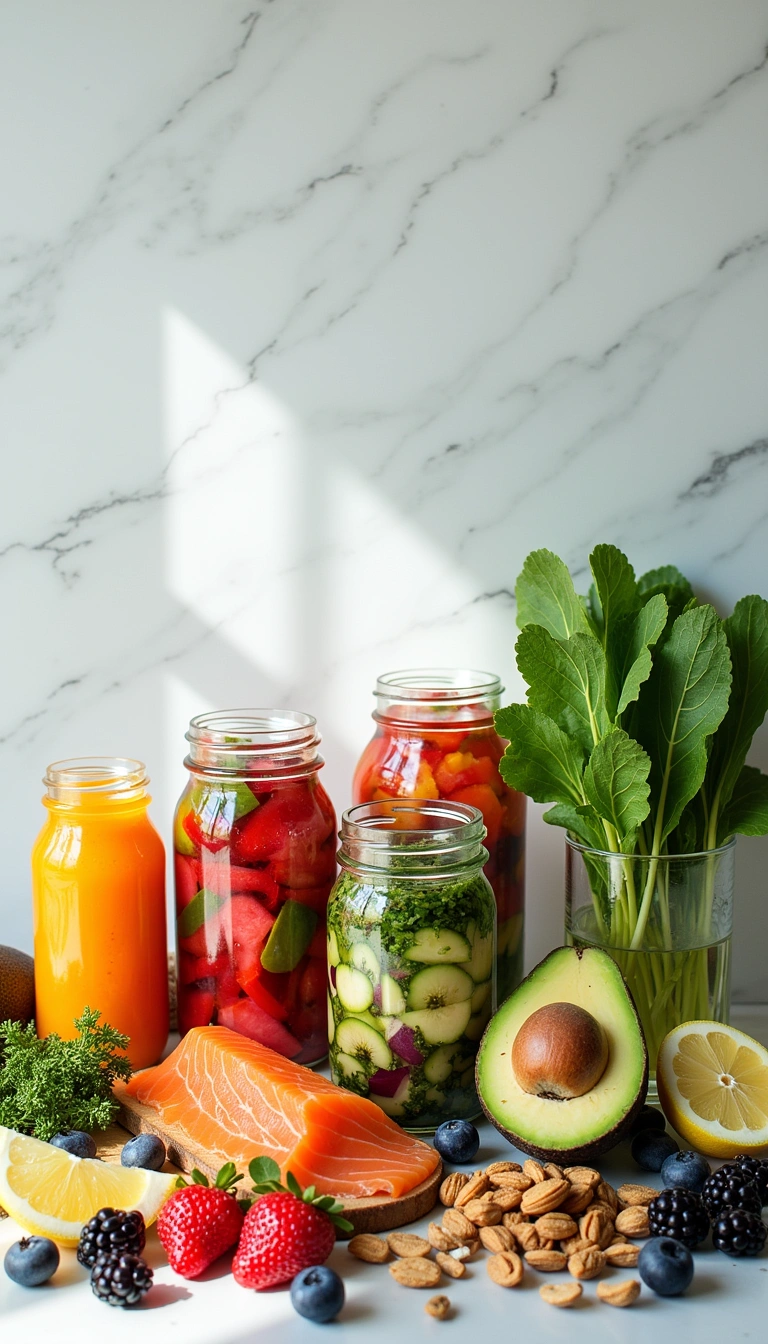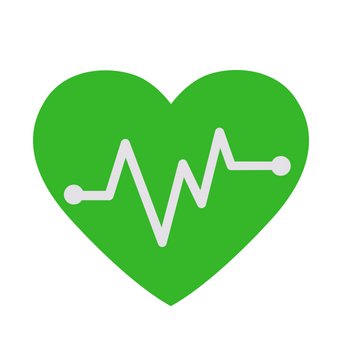A gut health diet for acne can transform your skin by healing inflammation from within. Your digestive system directly impacts how clear and radiant your complexion appears. When harmful bacteria outnumber the good ones in your gut, toxins build up and show on your face. The right foods can restore balance and give you the glowing skin you deserve.
Understanding The Gut-Skin Connection

Your gut and skin talk to each other through what scientists call the gut-skin axis. When your digestive system becomes unbalanced, it sends inflammatory signals throughout your body. These signals often appear as breakouts, redness, and irritated skin on your face.
Poor gut health allows toxins to leak into your bloodstream through your intestinal walls. Your skin then tries to eliminate these toxins, leading to clogged pores and acne flare-ups. This process explains why topical treatments alone often fail to solve persistent skin problems.
Research shows that people with acne have different gut bacteria compared to those with clear skin. The imbalance creates more inflammation and affects how your body processes hormones. Fixing your gut microbiome addresses the root cause rather than just treating symptoms.
Foods That Heal Your Gut And Clear Your Skin
Certain foods work like medicine for your digestive system and skin. These nutrient-dense options feed beneficial bacteria while reducing inflammation throughout your body. Building your meals around these healing foods creates lasting changes in your complexion.
1. Fermented Foods That Boost Good Bacteria
Fermented foods contain live probiotics that restore healthy bacteria in your gut. These beneficial microorganisms crowd out harmful bacteria that contribute to acne and inflammation. Adding fermented foods to your daily routine strengthens your digestive system and improves skin clarity.
Kimchi, sauerkraut, and kefir are excellent sources of diverse probiotic strains. Greek yogurt with live cultures provides protein plus gut-healing bacteria. Start with small portions since your digestive system needs time to adjust to increased probiotic intake.
Tip: Add two tablespoons of sauerkraut or kimchi to your lunch every day for an easy probiotic boost.
2. Prebiotic Fiber Foods That Feed Healthy Bacteria
Prebiotic fibers act as food for the good bacteria already living in your gut. Without proper fuel, beneficial bacteria cannot thrive and multiply effectively. These special fibers also help remove toxins from your system before they can affect your skin.
Garlic, onions, and leeks contain powerful prebiotics called fructooligosaccharides. Asparagus, artichokes, and green bananas provide resistant starch that feeds beneficial bacteria. Jerusalem artichokes offer some of the highest prebiotic content of any vegetable.
Takeaway: Include one prebiotic-rich food in each meal to keep your gut bacteria well-fed and active.
3. Anti-Inflammatory Omega-3 Rich Foods
Omega-3 fatty acids reduce inflammation throughout your body, including your skin. These healthy fats help repair your gut lining and support the growth of beneficial bacteria. Regular omega-3 intake can significantly decrease acne severity and redness.
Wild-caught salmon, sardines, and mackerel provide the most bioavailable omega-3s. Walnuts, chia seeds, and flaxseeds offer plant-based options for vegetarians. Aim for at least two servings of omega-3 rich foods per week for optimal results.
Tip: Sprinkle ground flaxseed on your morning oatmeal or smoothie for an easy omega-3 boost.
4. Zinc-Rich Foods For Skin Healing
Zinc plays a crucial role in wound healing and reducing acne-causing inflammation. This essential mineral also supports healthy gut bacteria and strengthens your intestinal barrier. Low zinc levels are commonly found in people with persistent acne problems.
Oysters contain more zinc than any other food, but pumpkin seeds and beef are more practical options. Chickpeas, lentils, and cashews provide plant-based zinc sources. Your body absorbs zinc better when you eat it with protein-rich foods.
Takeaway: Snack on a handful of pumpkin seeds daily to boost your zinc intake naturally.
5. Antioxidant-Packed Colorful Vegetables
Colorful vegetables provide antioxidants that protect your gut lining from damage. These nutrients also reduce inflammation and support your skin’s natural healing processes. The variety of colors ensures you get different types of protective compounds.
Dark leafy greens like spinach and kale contain folate and vitamin K for skin repair. Orange vegetables like sweet potatoes provide beta-carotene that converts to skin-healing vitamin A. Purple vegetables like eggplant offer anthocyanins that reduce inflammation.
Tip: Fill half your plate with colorful vegetables at each meal to maximize antioxidant intake.
Foods To Avoid For Better Gut Health
Some foods disrupt your gut bacteria balance and trigger inflammatory responses. These problematic foods can undo the progress you make with healing foods. Identifying and reducing these triggers is essential for clearing your skin from the inside out.
6. Refined Sugar And Processed Foods
Refined sugar feeds harmful bacteria in your gut while starving beneficial microorganisms. This imbalance creates inflammation and allows toxins to enter your bloodstream. Processed foods often contain additives that further disrupt your gut microbiome.
High-sugar foods cause blood sugar spikes that increase sebum production in your skin. Processed snacks, sodas, and candy are the worst offenders for gut and skin health. Even seemingly healthy foods like flavored yogurts can contain excessive added sugars.
Takeaway: Replace processed snacks with whole foods like apple slices with almond butter or raw vegetables with hummus.
7. Dairy Products That Trigger Inflammation
Many people cannot properly digest dairy proteins and lactose, leading to gut inflammation. Dairy consumption also increases insulin-like growth factor-1 (IGF-1), which stimulates oil production in your skin. The hormones naturally present in milk can disrupt your body’s hormone balance.
Milk, cheese, and ice cream are common triggers for both digestive issues and acne breakouts. Some people tolerate fermented dairy like yogurt better than regular milk products. Consider eliminating dairy for 30 days to see if your skin improves.
Tip: Try unsweetened almond milk, coconut yogurt, or cashew cheese as dairy alternatives.
8. Gluten-Containing Grains
Gluten can damage the intestinal lining in sensitive individuals, creating a leaky gut condition. This allows toxins and undigested food particles to enter your bloodstream and trigger inflammation. Even people without celiac disease may experience gut irritation from gluten.
Wheat, barley, and rye contain gluten proteins that some digestive systems cannot handle properly. The inflammatory response can show up as acne, eczema, or general skin irritation. Processed gluten-free foods aren’t automatically healthy, so focus on naturally gluten-free whole foods.
Takeaway: Choose quinoa, rice, or sweet potatoes instead of wheat-based breads and pasta.
Building Your Gut-Healing Meal Plan
Creating a sustainable meal plan helps you consistently eat gut-healing foods. Planning ahead prevents you from reaching for inflammatory foods when you’re hungry and unprepared. A structured approach makes it easier to see improvements in your skin.
Morning Routine For Gut Health
Start your day with foods that support digestive health and stable blood sugar. Your first meal sets the tone for how your gut bacteria behave throughout the day. Morning is also when your digestive system is most ready to absorb nutrients effectively.
Begin with warm lemon water to stimulate digestion and provide vitamin C. Follow with a protein-rich breakfast like eggs with sautéed vegetables or a smoothie with plant protein powder. Include healthy fats like avocado or nuts to keep you satisfied and support nutrient absorption.
Midday Meals That Nourish Your Microbiome
Lunch should combine prebiotic fibers, probiotics, and anti-inflammatory foods. This combination feeds your good bacteria while providing nutrients for skin repair. Make vegetables the star of your midday meal for maximum gut-healing benefits.
Try a large salad with mixed greens, fermented vegetables, and grilled salmon. Add prebiotic-rich foods like asparagus, artichoke hearts, or sliced garlic. Dress your salad with olive oil and lemon juice for healthy fats and vitamin C.
Evening Foods For Overnight Healing
Your final meal should be easy to digest while providing nutrients for overnight skin repair. Avoid heavy, inflammatory foods that can disrupt sleep and stress your digestive system. Focus on gentle, nourishing options that support your body’s natural healing processes.
Light protein sources like fish or chicken pair well with cooked vegetables for easier digestion. Include magnesium-rich foods like leafy greens or pumpkin seeds to promote relaxation. Stop eating at least two hours before bedtime to allow proper digestion.
Lifestyle Habits That Support Gut Health
Diet alone isn’t enough to optimize your gut microbiome and clear your skin. Stress, sleep, and other lifestyle factors significantly impact your digestive health. These additional strategies amplify the benefits of your gut-healing diet.
Managing Stress For Better Digestion
Chronic stress disrupts your gut bacteria balance and increases inflammation throughout your body. High stress levels also affect how well you digest and absorb nutrients from food. Learning to manage stress is crucial for both gut health and clear skin.
Practice deep breathing exercises before meals to activate your parasympathetic nervous system. This helps your body enter “rest and digest” mode for optimal nutrient absorption. Regular meditation, yoga, or walking can reduce overall stress levels and support gut healing.
Getting Quality Sleep For Skin Repair
Your gut bacteria follow a daily rhythm that’s closely connected to your sleep cycle. Poor sleep disrupts this rhythm and allows harmful bacteria to multiply. Your skin also does most of its repair work while you sleep, making quality rest essential.
Aim for 7-9 hours of sleep each night and try to maintain consistent bedtimes. Create a relaxing evening routine that signals to your body it’s time to wind down. Avoid screens and stimulating activities for at least an hour before bed.
Staying Hydrated For Toxin Elimination
Proper hydration supports healthy digestion and helps your body eliminate toxins through normal channels. When you’re dehydrated, your body may try to eliminate toxins through your skin instead. This process can contribute to clogged pores and breakouts.
Drink at least half your body weight in ounces of water daily. Add lemon, cucumber, or mint to make plain water more appealing. Herbal teas like ginger or chamomile provide hydration plus digestive benefits.
Tracking Your Progress And Making Adjustments
Healing your gut and clearing your skin takes time and patience. Most people start seeing improvements within 4-6 weeks of consistent dietary changes. Keeping track of your progress helps you identify what works best for your unique body.
Take photos of your skin weekly to document changes that might be gradual. Keep a food and symptom journal to identify personal triggers and beneficial foods. Note your energy levels, digestion, and mood alongside skin changes for a complete picture.
Remember that everyone’s gut microbiome is unique, so what works for others might need adjustments for you. Be patient with the process and focus on progress rather than perfection. Small, consistent changes create lasting improvements in both gut health and skin clarity.
Your journey to clear skin through gut health is an investment in your overall well-being. The foods and habits that heal your digestive system will continue benefiting your health for years to come. Start implementing these changes today and watch your skin transform from the inside out.

Lifebing is driven by an unrelenting passion for promoting health and well-being, our team is wholly committed to curating exceptional content and immersive experiences.
